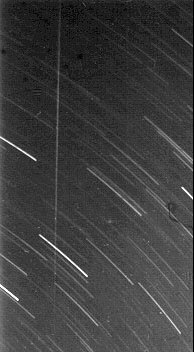 Marco Langbroek : Impressions of a rainy Perseids max in the Netherlands Marco Langbroek : Impressions of a rainy Perseids max in the Netherlands |
 Koen MiskotteKoen Miskotte: Impressions of a rainy day Koen MiskotteKoen Miskotte: Impressions of a rainy day |
 Rijk-Jan Koppejan : Impressions of Perseids 2001 Rijk-Jan Koppejan : Impressions of Perseids 2001 |
 Ton Schoenmaker : Forward Scatter Perseids 2001 Ton Schoenmaker : Forward Scatter Perseids 2001 |
Marco Langbroek
Koen Miskotte
We almost every year loses...
The last time we had clear Perseid maxima was in 1997...
Sometimes it is hard...
Clear Skies,
Koen Miskotte.
Rijk-Jan Koppejan
 |
|
Ton Schoenmaker
Observer: Ton Schoenmaker
Location: Roden, Netherlands (06º26'E, 53º08'N)
Frequency: 60.500 MHz
Transmitter: French TV channel L3 (video); transmitter in Carcassonne (100 kW),
distance ~1150 km
Antenna: 3-elements horizontal Cushcraft 50 MHz Yagi tuned to 55 MHz;
geographical azimuth 195 degrees (SSW)
Receiver: Yupiteru MVT-9000 in USB mode; sensitivity 0.5 uV at 12 dB S/N
Observing: 800 Hz audio signal from earphone socket was rectified, digitised
and fed into a PC via the parallel computer port. HP VEE was used
to process the digitised signal and to store 15-minutes counts of
reflections stronger than 0.22 uV (-120 dBm). Also for all
individual meteors date, time, duration (dead time) and maximum
signal are stored.
The results of the observations are shown in the figure. The dead time corrected counts per hour are plotted in red, the dead time = reflection time percentages in blue. The observations of August 10 are typical for the daily activity of sporadic meteors. The following days counts and dead time were above the sporadic level showing a Perseid maximum on 12 August 2001 about 12h UTC. Due to pointing of the antenna (about SSW), observability for the Perseids was low around 5h30m and 19h30m, and high around 1h45m and 8h30m UTC. The data in the figure are not corrected for the observability function. A few observations from periods with continuous reception (due to enhanced propagation like tropo, sporadic-E) have been removed.

Ton Schoenmaker, Dutch Meteor Society and IMO
Meester Homanstraat 8, NL 9301 HP Roden, Netherlands
E-mail: schoenmaker@ASTRON.nl
Call: PA0EFA